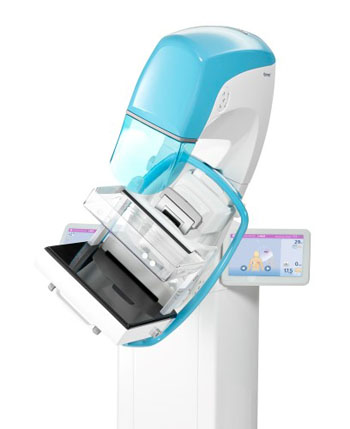New Breast Tomosynthesis System Improves Image Accuracy
By MedImaging International staff writers
Posted on 26 Apr 2016
Innovative digital breast tomosynthesis (DBT) systems provide enhanced diagnostics, especially for patients with denser breast tissue.Posted on 26 Apr 2016
The Planmed Oy (Helsinki, Finland) Clarity 3D DBT system resolves the challenge of overlapping tissue structures by producing sharp 3D reconstructions of breast tissue that permit higher visibility of small microcalcifications and delicate tissue and blood vessel structures, using a patented Continuous Sync-and-Shoot method that eliminates both motion blur and artifact intrusion. The product family also includes the Planmed Clarity 2D digital mammography system, which can be easily upgraded to DBT at any time.

Image: The Clarity 3D DBT system (Photo courtesy of Planmed).
Both systems allow imaging with a low effective patient dose, and feature a durable digital detector for mobile screenings, as well as touch controls on dual touchscreens that adapt to each of the available imaging modes. The system has a compact footprint and can be installed in small rooms, and runs from a standard wall outlet. The eye-catching design, which won the prestigious Red Dot (Essen, Germany) Design Award, can be tailored to suit a variety of color schemes, providing a personal touch and helping to reduce patient anxiety.
“We can reduce patient anxiety with the design of the systems, and consequently encourage more women to participate in breast cancer screenings,” said Jan Moed, managing director of Planmed. “The Red Dot jury especially valued their eye-catching and functional design, which also enhances ergonomics. The adaptive touch control of the systems will provide an unforeseen user experience.”
DBT mammograms use low dose x-rays to create a 3D image of the breast, which can then be viewed the in narrow slices, similarly to CT scan images. While in conventional 2D mammography overlapping tissues can mask suspicious areas, 3D images eliminate the overlap, making abnormalities easier to recognize. Experts estimate that 3D DBT mammography will replace conventional mammography within ten years.
Related Links:
Planmed Oy














